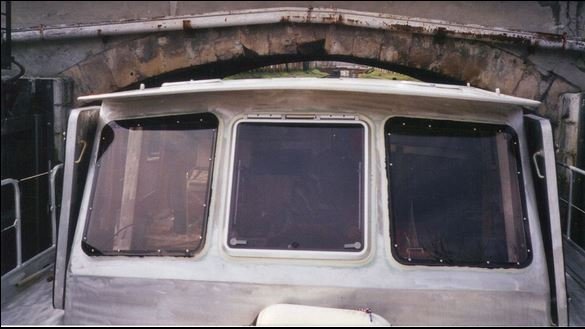Given how unpopular the following comments will be, I may get disappeared here.....
I still am confused if you are considering inshore or offshore but my view is that for inshore, speed, comfort, and aesthetics that stir your heart are likely the major criteria. As a previous sailor, a good sea trial on a 'trawler' type vessel will likely be very informative for you. For inshore, if you find yourself in building conditions you can escape easily in most cases.
Now for the heresy. If you are serious about offshore, I deeply respect the suggestion to read Beebe and Beuhler. BUT, to suggest this can be the end of your research is akin to suggesting that reading Wilbur and Orville's handwritten notes is all there is to say about aeronautics and flying.
If you are serious, read/watch Dashew, Vripack Design Studio, Malcom Tennant (power and sail) and surely some others as well. These folks will not stutter when you inquire about stability specs and other important hull design ratios. They live by them, are proud of them, and happy to share both theoretical, sea trial, and incline test numbers.
While there are some very skilled vested interests perpetuating the idea that heavy and slow is all there is, as Loretta Lynne would say, "we've come a long way, baby".
BTW. I own a heavy and slow and I really like that boat.
You should not be disappeared for saying the truth.

Well, if you read Beebe as updated by Nordhavn's Leishman, the conclusion will be you need (surprise) a Nordhavn. If you read Dashew, the end-of-the-rainbow will be (surprise) a long skinny boat. And I'd guess that if you read Tennant, you will be convinced you need (surprise) a multi-hull. Reminiscent of the parable of five blind men feeling different parts of an elephant "it is like a snake" said the one who felt the tail. And so on. Dont get me wrong, all strong boats with impressive resumes, just that purposes of the OP's question of a consistent rating approach, well, there are many ways to skin that cat.......if you're looking a passagemaking capabilities.
But most are not looking at passagemaking capabilities. I think Hippocampus said it best: You’re unlikely to even see 6’. Boarding seas from your beam are equally unlikely. Use your common sense and accept the limitations of recreational trawlers except the very rare ones built from scratch for that service. If the OP is looking to cross oceans, different kettle of fish.
Peter
One should read Beebe, Buehler, the Dashews, Colvin, etc. They all have different viewpoints, and reasons supporting their view, which is why one reads them. One hopefully becomes educated enough to see which of the view points best matches the goals one is trying to achieve with a boat. There is not A Right Answer, in fact, there are often Many Right Answers, not to mention Good Enough Answers.

Since boats are so designed constrained, one really needs to focus on what one will do, as opposed to wants to do, to get what is needed to do.
Decades ago, when the seeds for the crazy boat idea were sprouting, I read Buehler and Kasten. Kasten's has a great website for technical information on boat building but I don't like the looks of his boats, mostly the interiors. Buehler's interiors were not that good, and my impression was that he like to design the structure and exterior of a boat, the interior, not so much.

We seriously looked at Diesel Ducks, met George and traveled to China to see the boat yards. But it was too soon for us to have a boat for a variety of reasons and one of our big concerns about having a boat built in China, is now reality. At the same time the FPB and LRC boats were arriving and were, and are, very interesting. The FPB is just too expense, the LRC was a bit too small space wise and too new.
Fast forward to today, the FPB is still too expensive,

but the LRC has matured and has a new model that seems to be about right. For Us. Some of the advantages of the LRC is range, speed, low draft, low air height, ability to dry out, sized to fit many of the European canals, and huge solar power production. However, to get these attributes, one is giving up living space. The pesky design constraints can't be escaped.
Reading my every growing library of boat books to get different viewpoints, spending time on boats, visiting boat yards, seriously looking at places we want to visit, and thinking about which boat characteristics are most important, back to the books, has really helped focus on what is most important to us. But it all started with the websites and the books.
Later,
Dan


 :lol:
:lol: